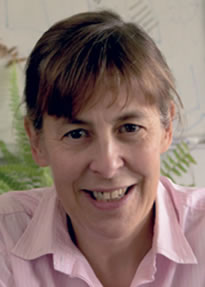Microbial Genomics: Standing on the Shoulders of Giants
Dame Janet Thornton

Dame Janet Thornton DBE, FRS FMedSci is a Director at the European Bioinformatics Institute and European Molecular Biology Laboratory (EMBL-EBI) at the Wellcome Trust Genome Campus, UK.
She is one of the world’s leading researchers in structural bioinformatics, using computational methods to understand protein structure and function. As such, she is undoubtedly a pioneer of modern genomics.
Dame Thornton was elected Fellow of the Royal Society (FRS) in 1999 and a Fellow of the Academy of Medical Sciences in 2014. In July 2015, the Sanger Institute Fellowship was renamed The Janet Thornton Fellowship, in her honour. The postdoctoral fellowship is designed to support researchers who have taken a career break, and reflects Dame Thornton’s own first-hand experiences of the challenges facing women in science, in flexibly managing a demanding scientific career whilst also raising a family.
Microbial Genomics interviewed Janet Thornton on her experience in the field and the research that inspired her own career.
How has your own research impacted the field and how has the development of the field impacted your recent research?
I have not worked on microbial genetics directly. My interest has been in proteins and their structures, functions and evolution, regardless of their species. Our research has been helpful in providing a better understanding of the universe of proteins and, more recently, biochemical reactions. This allows improved interpretation of genome sequences and how they evolve to perform new functions according to the species and its environment. We now have a large number of microbial genomes, which reveal a wider world of sequences and variations within a single species. Understanding how microbes respond to changes in their environment by evolving new genes and proteins with corresponding enzymes and biochemical reactions is a current area of interest to my group.
Who was the most inspirational person to you in your career?
No one single person has provided inspiration - rather many, each with different attributes - and often it is my students and post-docs who provide the greatest inspiration.
Which published paper had the most scientific impact in your area of research?
Undoubtedly the following paper, written by Roman Laskowski, a long term collaborator and member of my group:
Laskowski RA, MacArthur MW, Moss DS and Thornton JM. PROCHECK: A program to check the stereochemical quality of protein structures. J Appl Crystallography 1993;26:283–291 doi:10.1107/s0021889892009944.
This paper describes a computer program used to 'validate' the stereochemistry of protein 3D structures, determined by X-ray crystallography. It has been cited over 18,000 times, being amongst the list of the 100 most cited papers ever. It evolved from our desire to understand more about how proteins fold and how their structure is constrained by the 'chemistry' of the peptide chain. Based on observed protein structures, new structures can be analysed to see if they are 'normal', so identifying likely errors of interpretation of the electron density map. The program was made available through 'CCP4 Software for Macromolecular Crystallography', which is used by crystallographers worldwide. However, improved tools for structure validation are now available.
In the last year, which area of research within microbial genomics has struck you the most?
Genomes for microbes associated with specific diseases and the genetic cause of pathogenicity has to be one of the most exciting areas. Also the use of microbial genomic sequence to track infections in hospitals and pandemics world wide has to be one of the most exciting new possible approaches to monitor infectious disease and its spread. This area of research uses our knowledge of evolution and the use of tools developed to explore evolution to a very specific and practical application.
